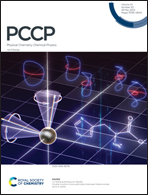A highly active catalyst derived from CuO particles for selective hydrogenation of acetylene in large excess ethylene
Abstract
The removal of acetylene impurities is indispensable in the production of ethylene. An Ag-promoted Pd catalyst is industrially used to remove acetylene impurities by selective hydrogenation. It is highly desirable to replace Pd with non-precious metals. In the present investigation, CuO particles, which are most frequently used as the precursors for Cu-based catalysts, were prepared through the solution-based chemical precipitation method and used to prepare high-performance catalysts for selective hydrogenation of acetylene in large excess ethylene. The non-precious metal catalyst was prepared by treating CuO particles with acetylene-containing gas (0.5 vol% C2H2/Ar) at 120 °C and subsequent hydrogen reduction at 150 °C. The obtained catalyst was tested in selective hydrogenation of acetylene in a large excess of ethylene (0.72 vol% CH4 as the internal standard, 0.45 vol% C2H2, 88.83 vol% C2H4, 10.00 vol% H2). It exhibited significantly higher activity than the counterpart of Cu metals, achieving 100% conversion of acetylene without ethylene loss at 110 °C and atmospheric pressure. The characterization by means of XRD, XPS, TEM, H2-TPR, CO-FTIR, and EPR verified the formation of an interstitial copper carbide (CuxC), which was responsible for the enhanced hydrogenation activity.



 Please wait while we load your content...
Please wait while we load your content...